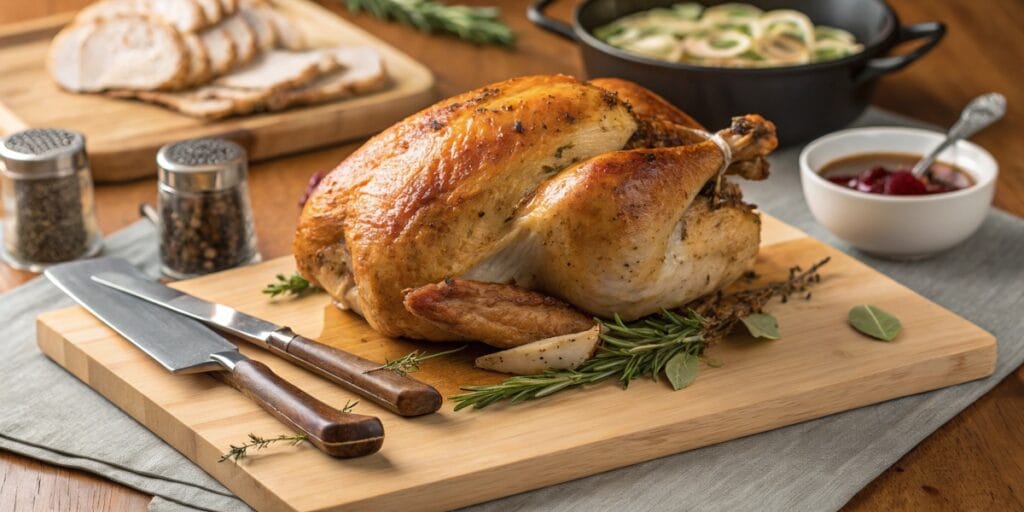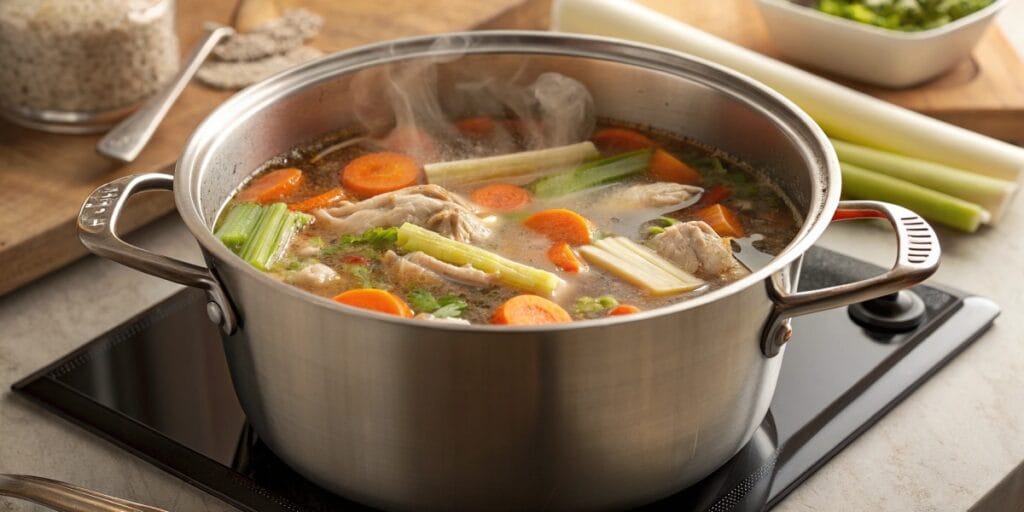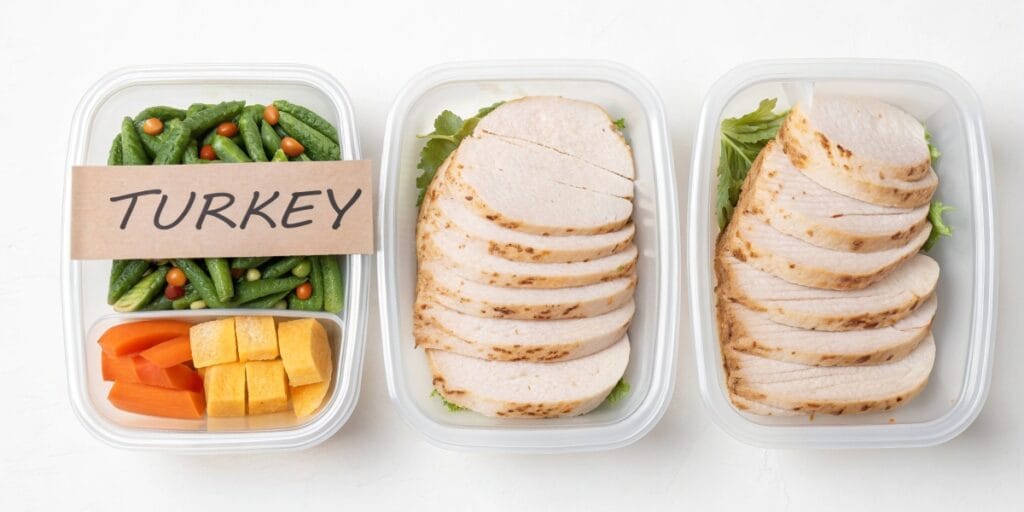Can You Leave Leftover Turkey on the Bone?
The holiday season is a time for family, fun, and food—especially turkey. But once the big feast is over, the question of what to do with the leftovers arises. One common concern is whether it’s safe to leave leftover turkey on the bone or if it should be deboned immediately. Food safety is critical, especially when dealing with poultry, and improper storage can lead to spoilage or even foodborne illnesses.

In this guide, we’ll explore the risks and benefits of leaving turkey on the bone, best practices for storing and reheating it, and creative ways to use leftover turkey. For additional inspiration on repurposing leftovers, check out Easy Leftover Turkey Recipes.
Why Proper Food Storage Matters
When it comes to storing cooked food, particularly poultry, following food safety guidelines is essential to prevent health risks like Salmonella or E. coli. Improper storage can lead to bacterial growth, spoilage, and wasted food. Here are a few key points to remember:
- Refrigerate within two hours: Cooked turkey should be stored in the refrigerator promptly to avoid exposure to the danger zone (40°F–140°F), where bacteria thrive.
- Keep it cold: Ensure the fridge temperature is at or below 40°F (4°C).
- Use airtight containers: These prevent contamination and help retain moisture.
For general food storage tips, visit USDA Food Safety Guidelines.
Can You Leave Turkey on the Bone?
The Answer Depends on Key Factors
Leaving turkey on the bone can be convenient, but it poses specific risks and depends on how you plan to store and consume the leftovers. Here’s what to consider:
- Storage Duration: If you plan to eat the turkey within 1–2 days, it may be safe to leave it on the bone.
- Temperature Management: The turkey must cool quickly to prevent bacterial growth. Use shallow containers to promote even cooling.
- Intended Use: If you’re using the meat soon for soups or casseroles, leaving it on the bone temporarily can save time.
Risks of Leaving Turkey on the Bone
While leaving turkey on the bone has some advantages, there are risks:
- Hard-to-Reach Areas: Bones and joints can trap residual meat that may spoil faster.
- Uneven Cooling: Larger pieces of meat take longer to cool, increasing the risk of bacteria growth.
For advice on making the most of your turkey, see Popular Dishes Made From Leftover Turkey.
Best Practices for Storing Leftover Turkey
Why Deboning Is Safer
Deboning turkey ensures faster and more even cooling, which reduces the risk of spoilage. Additionally, it makes reheating and portioning much easier. Here’s how to debone your turkey safely:
- Act Quickly: Remove meat from the bone within two hours of cooking.
- Use the Right Tools: A sharp knife or carving tool helps remove meat efficiently.
- Store Properly: Place the meat in airtight containers or freezer bags, removing as much air as possible.
- Label and Date: Keep track of storage times to avoid eating spoiled leftovers.
Using Airtight Containers
Airtight containers are ideal for storing turkey because they:
- Keep the meat moist and tender.
- Prevent cross-contamination with other foods.
- Help retain the turkey’s flavor for longer.
For more storage tips for perishable items, see Are Day-Old Cookies Still Good?.
How Long Can You Store Leftover Turkey?
- Refrigerated: Store turkey in the refrigerator for up to 4 days.
- Frozen: Freeze leftover turkey for up to 3 months. For best results, use vacuum-sealed bags or airtight containers.
What to Do with Turkey Bones?
Turkey bones are a treasure trove of flavor and nutrition. Instead of tossing them, use them to create homemade stock or soup. Here’s how to get started:
- Freeze Bones: If you don’t plan to use them immediately, place the bones in a freezer bag labeled with the date. They’ll keep for up to 3 months.
- Make Stock: Combine bones with onions, carrots, celery, and herbs in a large pot. Simmer for 4–6 hours to extract maximum flavor.
- Use in Recipes: Turkey stock can be the base for soups, stews, and sauces.
Reheating Leftover Turkey Safely
Reheating leftover turkey requires attention to detail to maintain both safety and taste. The USDA recommends reheating all leftovers to an internal temperature of 165°F (74°C). Here are the best methods:

- Microwave: Place turkey in a microwave-safe dish, cover it with a lid or plastic wrap, and heat in short intervals, stirring between.
- Oven: Preheat the oven to 350°F (175°C). Wrap the turkey in foil and add a splash of broth or water to prevent drying out.
- Stovetop: Heat turkey slices in a skillet with a bit of broth to keep them moist.
Creative Ways to Use Leftover Turkey
Leftover turkey is versatile and can be transformed into countless dishes. Here are a few ideas:
- Turkey Pot Pie: For a hearty comfort food classic, check out The Ultimate Turkey Pot Pie Recipe.
- Turkey Casserole: Combine turkey with noodles, vegetables, and creamy sauce for an easy one-dish meal.
- Turkey Sandwiches: Add turkey, cranberry sauce, and stuffing between slices of bread for a festive twist.
Common Myths About Turkey Storage
Myth: Leaving Turkey on the Bone Keeps It Fresher
Fact: Deboning allows turkey to cool evenly, which reduces the risk of bacterial growth and preserves freshness longer.

Myth: Stuffing Left Inside the Turkey Is Safe
Fact: Stuffing stored inside a cooked turkey can trap bacteria. Always remove stuffing immediately after cooking and store it separately.
FAQs
Can you leave leftover turkey on the bone
Yes, but deboning before freezing is recommended. It ensures even freezing, makes thawing easier, and reduces storage space requirements.
How Long Can Turkey Bones Be Stored?
Turkey bones can be frozen for up to 3 months. Label the bag with the date to track storage time.
What Is the Best Way to Defrost Leftovers?
Defrost turkey in the refrigerator overnight. Avoid leaving it out at room temperature to prevent bacterial growth.
Conclusion
Storing leftover turkey safely is vital for ensuring delicious meals and maintaining your health. While it may be convenient to leave turkey on the bone, deboning is the safer option for longer storage and easier reheating. Be sure to store your leftovers promptly, use airtight containers, and repurpose turkey bones for flavorful stock.
By following these tips, you can enjoy every bit of your turkey and minimize waste. For additional food safety tips, visit USDA Food Safety Guidelines or check out FDA Foodborne Illness Prevention. Happy holidays and happy feasting!
